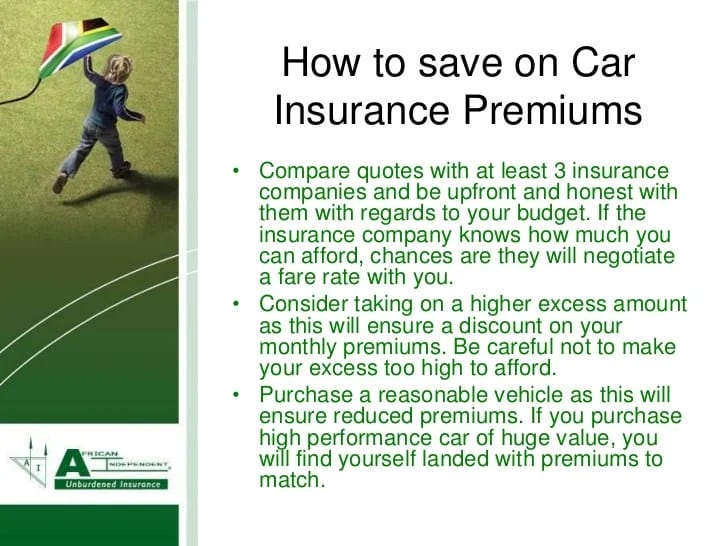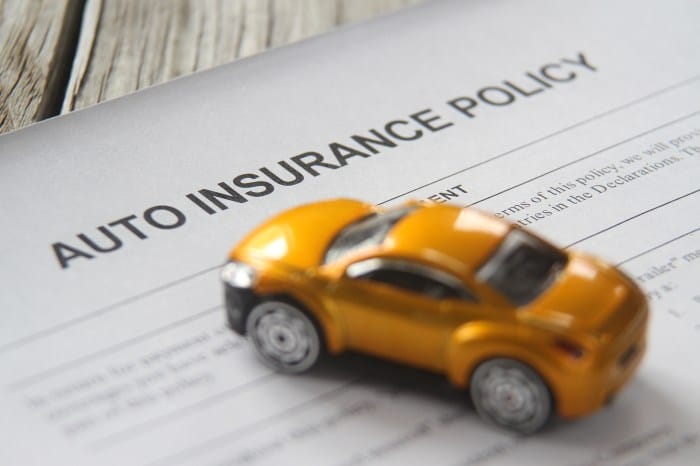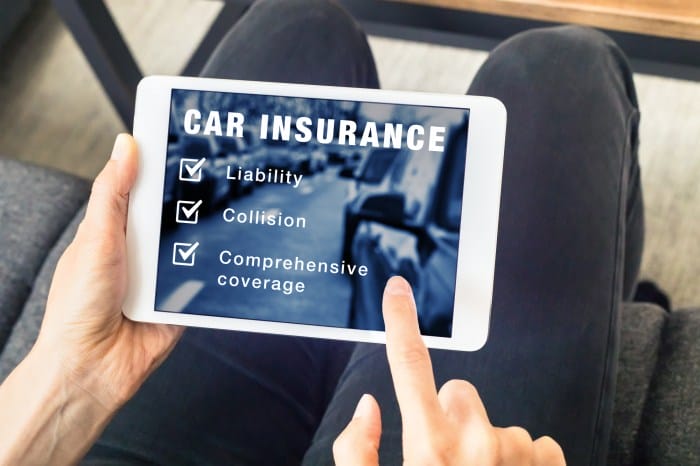In the realm of personal finance, auto insurance stands as a significant expense, often straining budgets. However, with a strategic approach, it’s possible to secure quality auto insurance without breaking the bank. Embark on a journey of exploration as we unveil a treasure trove of tips and tricks to help you save on auto insurance, ensuring a smoother ride towards financial freedom.
From comparing quotes and bundling policies to embracing safe driving practices and utilizing innovative programs, this comprehensive guide equips you with the knowledge and tools to navigate the complexities of auto insurance. Prepare to unlock the secrets of savvy savings and experience the satisfaction of securing quality coverage at an affordable price.
Insurance Comparison

Understanding the differences between auto insurance providers is crucial in securing the best coverage at a competitive price. Comparing quotes from multiple providers allows you to assess factors like premiums, coverage options, customer satisfaction, and reputation.
By comparing quotes, you can make informed decisions, ensuring you receive the optimal combination of coverage and affordability.
Comparing Insurance Quotes
To effectively compare auto insurance quotes, consider the following steps:
- Gather Information: Compile details about your vehicle, driving history, and desired coverage levels.
- Obtain Quotes: Request quotes from several reputable insurance providers. You can do this online, over the phone, or through an insurance agent.
- Analyze Premiums: Compare the premiums offered by each provider. Keep in mind that the cheapest option may not always provide the best coverage.
- Assess Coverage Options: Evaluate the coverage limits, deductibles, and additional coverage options offered by each provider.
- Consider Customer Satisfaction: Research customer reviews and ratings to gauge the level of satisfaction with each provider’s service and claims handling.
- Consult an Insurance Agent: If you find the comparison process overwhelming, consider seeking guidance from an insurance agent who can provide personalized recommendations.
Bundling Strategies

Discover the benefits of combining your auto insurance with other insurance policies, such as homeowners’ or renters’ insurance, to save money. Learn how bundling can provide discounted rates and make insurance management more efficient.
By bundling your insurance policies, you can take advantage of discounts offered by insurance providers for insuring multiple policies with them. This often results in lower premiums for each policy included in the bundle, leading to significant savings on your overall insurance costs.
Convenience and Simplicity
- Managing multiple insurance policies with a single provider simplifies the process, reducing the hassle of dealing with different companies and renewal dates. This makes it easier to keep track of your coverage and ensure that all your insurance needs are met.
- Bundling insurance policies can also save you time and effort. Instead of researching and comparing policies from different providers, you can work with a single company to find the best coverage options for your needs. This streamlined process can make insurance shopping and management much more efficient.
Safe Driving Rewards

Auto insurance companies recognize the value of safe driving practices and often offer rewards or discounts to policyholders who demonstrate responsible driving behavior. These rewards incentivize cautious driving and promote safer roads.
Accident-Free Record Discounts
Many insurance companies provide discounts to policyholders who maintain an accident-free record for a specified period, typically three to five years. This discount can range from 5% to 20% off the base premium and serves as a direct reward for safe driving.
Defensive Driving Course Completion Discounts
Completing an approved defensive driving course can also lead to insurance discounts. These courses teach drivers how to recognize and avoid hazardous situations on the road, reducing the likelihood of accidents. Discounts for completing defensive driving courses typically range from 5% to 15% off the base premium.
Telematics-Based Usage-Based Insurance (UBI) Programs
Telematics devices installed in vehicles track driving behavior, such as speed, braking, and mileage. Insurance companies use this data to determine the policyholder’s risk profile and adjust premiums accordingly. Safe drivers who maintain consistent speeds, avoid harsh braking, and limit their mileage may qualify for lower premiums under UBI programs.
Usage-Based Insurance Programs
Usage-based insurance (UBI) programs have emerged as innovative approaches to auto insurance, offering drivers the opportunity to save money by tracking their driving behavior. These programs utilize advanced technology to monitor driving habits, such as mileage, speed, braking, and acceleration, to determine the level of risk associated with each driver.
The technology employed in UBI programs typically involves a device installed in the vehicle, such as a smartphone app or a dedicated telematics device, that collects data on driving behavior. This data is then analyzed by the insurance company to assess the driver’s risk profile and determine the appropriate premium.
Potential Savings
UBI programs can provide significant savings for drivers who demonstrate safe driving habits. By monitoring driving behavior and rewarding safer drivers with lower premiums, UBI programs incentivize responsible driving and promote road safety. The potential savings can vary depending on the insurance company, the driver’s driving record, and the specific UBI program, but discounts of up to 30% or more are often available.
Claims Management
Efficiently managing auto insurance claims is crucial for a smooth and hassle-free experience. Following a structured process and maintaining accurate records can help you navigate the claims process seamlessly and ensure prompt settlement.
Steps for Filing Auto Insurance Claims
- Gather Information: Immediately after an accident, gather relevant information, including the names, contact details, and insurance information of all parties involved. Take photos of the accident scene, damage to vehicles, and any visible injuries.
- Notify Your Insurance Company: Contact your insurance provider as soon as possible, typically within 24 hours. Provide them with the basic details of the accident, including the time, location, and a brief description of the events.
- Complete Claim Forms: Your insurance company will provide you with claim forms that require details about the accident, including the cause, the extent of damages, and any injuries sustained. Fill out these forms accurately and comprehensively.
- Provide Supporting Documentation: Attach copies of relevant documents to support your claim, such as the police report (if applicable), medical bills, repair estimates, and photos of the accident scene.
- Cooperate with the Insurance Company: Your insurance company may appoint an adjuster to investigate the claim. Be cooperative and provide any additional information or documentation requested during the investigation process.
Importance of Maintaining Detailed Records
Keeping detailed records of accidents and damages is essential for smooth claims processing. These records can serve as valuable evidence in supporting your claim and ensuring a fair settlement.
- Accident Details: Maintain a record of the accident, including the date, time, location, weather conditions, and a brief description of what happened.
- Damages: Document the extent of damages to your vehicle, including photos, repair estimates, and receipts for any repairs made.
- Injuries: If there were any injuries sustained in the accident, keep copies of medical bills, doctor’s reports, and any other relevant medical documentation.
- Correspondence: Save all correspondence related to the claim, including emails, letters, and phone call logs, to keep track of the progress and any important updates.
Insurance Term Adjustments

Auto insurance policies come with specific terms and conditions that determine coverage and cost. Adjusting these terms can optimize coverage while saving money. Understanding the trade-offs and finding the right balance is key.
Coverage Limits
Coverage limits determine the maximum amount the insurance company will pay for covered expenses. Higher limits mean broader protection but also higher premiums. Consider adjusting limits based on the value of your vehicle and assets, liability risks, and personal preferences.
Deductibles
Deductibles are the amount you pay out of pocket before insurance coverage kicks in. Higher deductibles lower premiums. The key is finding the right balance between affordability and coverage adequacy. A higher deductible can be beneficial if you’re willing to assume more financial risk to save on premiums.
Claims Prevention Measures

Taking proactive measures to prevent auto accidents and reducing the likelihood of filing insurance claims can significantly impact your financial situation and insurance rates. By implementing these strategies, you can avoid costly repairs, medical bills, and potential legal complications.
Below are some practical steps you can take to prevent auto accidents and lower your insurance rates:
Regular Vehicle Maintenance
- Regularly maintain your vehicle to ensure it’s in optimal condition. Proper maintenance can prevent breakdowns, malfunctions, and potential accidents caused by mechanical failures.
- Follow the manufacturer’s recommended maintenance schedule for oil changes, tire rotations, brake inspections, and other essential services.
Safe Driving Practices
- Adhere to traffic laws, speed limits, and road signs. Avoid aggressive driving behaviors such as speeding, tailgating, and running red lights.
- Pay attention to the road and avoid distractions like texting, talking on the phone, or eating while driving.
- Be mindful of other drivers and anticipate their actions to avoid accidents.
Defensive Driving Techniques
- Learn and practice defensive driving techniques to enhance your ability to respond to hazardous situations on the road.
- Maintain a safe following distance, use your mirrors frequently, and signal your intentions clearly.
- Be prepared to yield to other drivers and avoid confrontations.
Vehicle Safety Features
- Consider investing in vehicles equipped with advanced safety features such as airbags, anti-lock brakes, electronic stability control, and lane departure warning systems.
- These features can help prevent accidents and reduce the severity of collisions.
Parking Precautions
- Park your vehicle in well-lit areas and avoid leaving valuables visible inside.
- Use anti-theft devices such as steering wheel locks or car alarms to deter theft and vandalism.
Driver Education and Training
- Enroll in driver education courses or workshops to improve your driving skills and knowledge of traffic laws.
- Consider taking advanced driving courses, such as skid control or accident avoidance training, to enhance your ability to handle challenging driving conditions.
Telematics and Discounts

Auto insurance companies are increasingly offering discounts for installing telematics devices in vehicles. These devices track driving behavior and provide data that can be used to assess risk and offer lower premiums.
Risk Assessment
Telematics devices collect data on a variety of driving behaviors, including speed, acceleration, braking, and cornering. This data can be used by insurers to assess risk and determine the likelihood of a driver filing a claim. Drivers who are deemed to be safer risks may be eligible for lower premiums.
Usage-Based Insurance
Telematics devices can also be used to implement usage-based insurance (UBI) programs. With UBI, premiums are based on the amount of driving a person does and the time of day they drive. This can be a good option for drivers who don’t drive very much or who primarily drive during off-peak hours.
How to Get a Discount
To get a discount for installing a telematics device, you’ll need to contact your auto insurance company and ask about their program. Some companies offer discounts for all drivers who install a device, while others only offer discounts to certain types of drivers, such as young drivers or drivers with a history of accidents.
Loyalty Programs and Renewals
Auto insurance companies recognize the value of loyal customers and often reward them with discounts or special benefits upon renewal. These loyalty programs are designed to incentivize policyholders to stay with the same provider for an extended period, creating a mutually beneficial relationship.
Maintaining a long-term relationship with an insurance provider can lead to significant savings over time. By demonstrating consistent and responsible driving behavior, policyholders can earn loyalty discounts that can accumulate year after year.
Examples of Loyalty Programs
- Geico: Geico offers a loyalty discount of up to 26% for policyholders who have been with the company for five years or more.
- Progressive: Progressive provides a loyalty discount of up to 10% for policyholders who have been with the company for three years or more.
- State Farm: State Farm offers a loyalty discount of up to 15% for policyholders who have been with the company for six years or more.
These loyalty discounts can add up to substantial savings over time, making it worthwhile for policyholders to consider the long-term benefits of staying with the same insurance provider.
Comprehensive Coverage Evaluation

Comprehensive coverage is an auto insurance option that covers damage to your vehicle caused by events other than collisions, such as theft, vandalism, fire, and natural disasters. Liability-only insurance, on the other hand, only covers damage you cause to other people’s property or injuries.
Deciding between comprehensive and liability-only coverage depends on several factors:
Assessing Your Vehicle’s Value
- Vehicle age: Older vehicles may not be worth as much as newer ones, making comprehensive coverage less cost-effective.
- Loan or lease status: If you have a loan or lease on your vehicle, comprehensive coverage may be required by the lender or leasing company.
- Local crime rates: If you live in an area with high rates of theft or vandalism, comprehensive coverage may be a wise investment.
Considering Your Driving Habits
- Annual mileage: If you drive very few miles each year, you may be less likely to get into an accident, making comprehensive coverage less necessary.
- Parking location: If you park your vehicle in a safe, secure location, you may be less likely to need comprehensive coverage.
- Accident history: If you have a history of accidents, comprehensive coverage may be more expensive.
Evaluating Your Budget
- Insurance costs: Comprehensive coverage typically costs more than liability-only coverage.
- Deductible: The deductible is the amount you pay out of pocket before your insurance coverage kicks in. A higher deductible can lower your insurance costs, but it also means you’ll have to pay more if you need to file a claim.
Ultimately, the decision of whether to purchase comprehensive coverage is a personal one. By carefully considering the factors discussed above, you can make an informed decision that meets your individual needs and budget.
Summary

As you embark on this quest for auto insurance savings, remember that knowledge is your most potent weapon. By arming yourself with the strategies Artikeld in this guide, you’ll be empowered to make informed decisions, optimize your coverage, and unlock substantial savings.
Embrace the journey, explore the options, and relish the peace of mind that comes with knowing you’ve secured quality auto insurance without sacrificing your financial well-being.
FAQs
Q: Is it worth comparing auto insurance quotes from multiple providers?
A: Absolutely! Comparing quotes from different insurance companies allows you to identify the most competitive rates and coverage options. This simple step can potentially save you hundreds of dollars annually.
Q: What are the benefits of bundling auto insurance with other policies?
A: Bundling auto insurance with homeowners’ or renters’ insurance often leads to discounted rates. Insurance companies recognize the loyalty of customers who bundle multiple policies and reward them with lower premiums.
Q: How can I earn rewards or discounts for safe driving?
A: Many auto insurance companies offer rewards programs that incentivize safe driving practices. These programs may provide discounts or cashback for accident-free records, completion of defensive driving courses, or maintaining a clean driving record.
Q: What are usage-based insurance programs, and how do they work?
A: Usage-based insurance programs track driving behavior using telematics devices installed in vehicles. These programs reward safer drivers with lower premiums based on their driving habits, such as smooth acceleration,が少ないブレーキ、and maintaining safe speeds.
Q: How can I adjust my auto insurance terms to optimize coverage and save money?
A: Adjusting your auto insurance terms involves finding the right balance between coverage limits, deductibles, and premiums. By increasing your deductible, you can lower your premium. However, it’s crucial to choose a deductible that you can comfortably afford in case of an accident.



